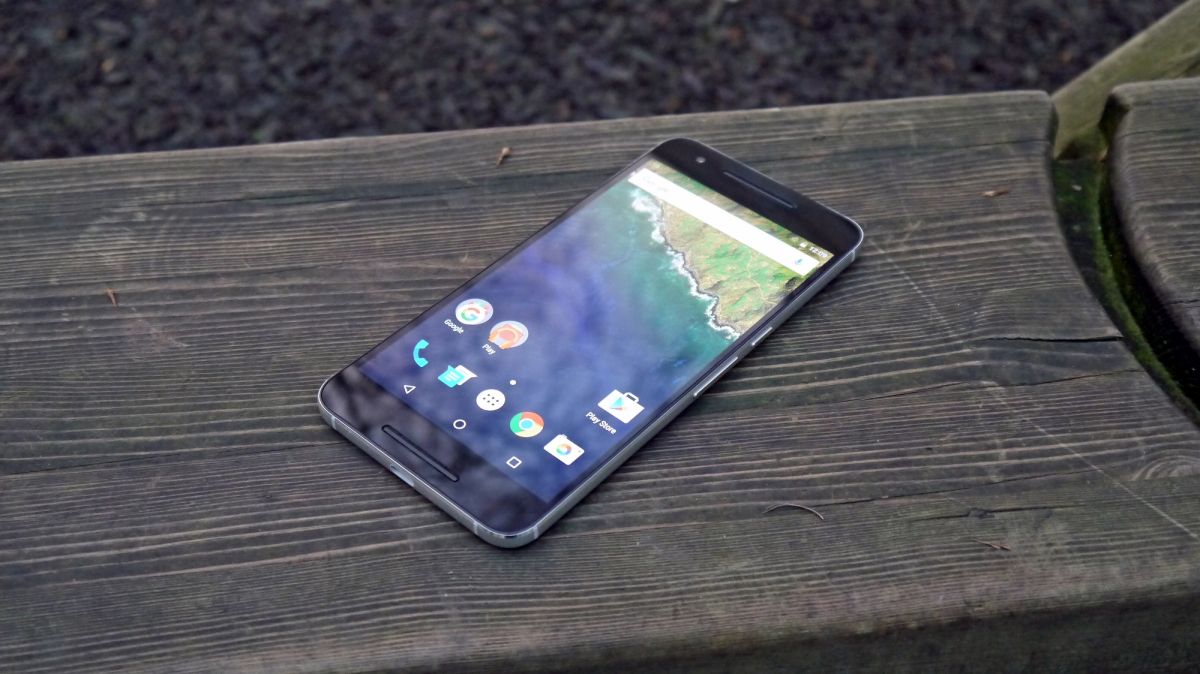
Introduction and design
Update: Nexus 6P now comes in gold and this new color has a price drop attached to it in the US, so our review has been revised to reflect these changes.
The Nexus 6P is Google’s current flagship Android phablet, but with a 5.7-inch display and cheaper price it won’t stretch your hand or your wallet quite as far as its predecessor, the Nexus 6.
The ‘P’ in the Nexus 6P’s name stands for ‘Premium’, thanks to its all-metal unibody design that’s meant to rival the aluminum iPhone 6S Plus and glass-and-metal infused Samsung Galaxy Note 5. It’s the bigger and more sophisticated-looking version of the plastic-coated Nexus 5X.
However, the P could’ve stood for … a lot of things: ‘Plus’, since it requires two hands to operate the phone properly, or ‘Palmable’, as it’s still way easier to clutch in one hand than the 6-inch Nexus 6.
It could also have easily stood for ‘Photos’, considering the Nexus 6P camera benefits from a 12.3-megapixel (MP) sensor that does a better job than many other cameras in low light; ‘Power’, as the device uses USB-C for fast charging; or ‘Performance’, given the top-of-the-line specs and inclusion of Android 6.0 Marshmallow.
Finally, the ‘P’ should be popular among bargain hunters for its ‘Price’. With a starting price of US$499 (£449, AU$899) for the 32GB model, it’s less expensive than the Google Nexus 6, which went for US$650 (£500, AU$870) at launch.
If you fancy a bit more space inside your 6P the 64GB version will set you back US$549 (£499, around AU$999), while the 128GB comes in at US$649 (£579, around AU$1099).
Even better, in the US, the brand new gold Nexus 6P is cheaper, costing $449 for 32GB and $499 for 64GB, a $50 savings that’s good today through Valentine’s Day, according to Google.
All of that said, there seems to be an endless number of 5.5- and 5.7-inch phones vying for the same phablet audience: iPhone 6S Plus, LG G4, Samsung Galaxy Note 5 and Moto X Style.
the Nexus 6P price is down, the specs have been upped just enough to make this a cost-effective Android contender for our best phones list.
Design
Huawei built the Nexus 6P to be different to any other Google-commissioned phone. Its metal design is undoubtedly a step up from the plastic Nexus 5X, and every previous Nexus.
Although relatively flat around the back with barely tapered edges, it feels comfortable in one hand, yet it still takes two hands to operate it properly. This is, after all, a phone with a 5.7-inch display.
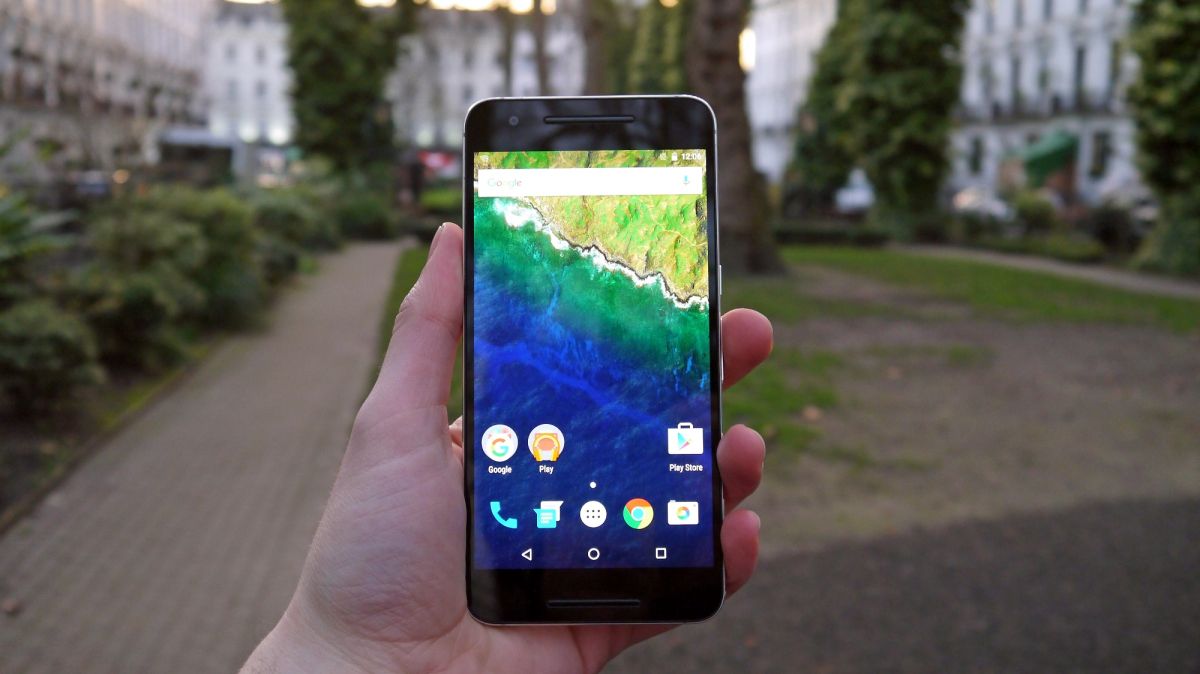
Its dimensions are 159.4 x 77.8 x 7.3mm, making it just one tenth of a millimeter taller than the Nexus 6, but notably narrower and thinner than its predecessors measurements of 159.3 x 83 x 10.1mm. My overly stretched-out, phone-wielding hands appreciate this change.
It went on a much-needed diet to become palmable, weighing in at 178g compared to 184g a year prior, despite Huawei raising the bar on the Nexus 6P specs.
Clearly, it was hard to fit everything in. The 12.3MP camera creates an unsightly-looking rear bulge with a black strip, but this eyesore is a fair trade-off given the better low light photos.

Everything else has a luxurious look to it. There’s a riveted power button with a unique texture, and a smooth volume rocker, on the right side of the frame. There’s little chance of mixing up these buttons in the dark.
There’s also no chance that I’ll ever put the charging cable in the wrong way. A reversible USB-C port sits on the bottom of the frame, replacing micro USB for faster charging.
While a 3.5mm headphone jack rests at the top, I dig the front-facing stereo speakers enough to use them. Too many Androids put the speakers on the back, which makes no sense at all.

There’s no off-beat color here, in a year when the Nexus 5X has a minty-looking Ice Blue color and the iPhone 6S debuted a popular rose gold option.
The Nexus 6P colors keep it simple with Aluminium (gray), Graphite (black) and Frost (white), although at CES 2016 manufacturer Huawei launched the gold variant of the 6P.
Want to customize or protect it? Google has already rolled out multiple cases. I tried out the microfiber 6P case and the very rubber 5X case, and prefer the microfiber option hands down. A leather folio case and elastomer are also options in the Google Store.
Display, fingerprint sensor and USB-C
The Nexus 6P challenges the Samsung Galaxy Note 5 and Moto X Style with a 5.7-inch display and quad HD resolution, and it keeps pace with its fellow Android juggernauts.
That’s because it’s backed by similar technology – a 5.7-inch AMOLED display, which contrasts with the 5.2-inch IPS LCD found in the Nexus 5X, LG G4 and iPhone 6S.
The screen has a 2,560 x 1,440 resolution with a dense 518 pixels per inch, and, all around it looks brighter and more colorful than the Nexus 6, which also had a dimmer quad HD display at the same resolution.
Brightness is undoubtedly higher when “adaptive brightness” is turned off, and color accuracy is a step in the right direction compared to what we saw from its predecessor.
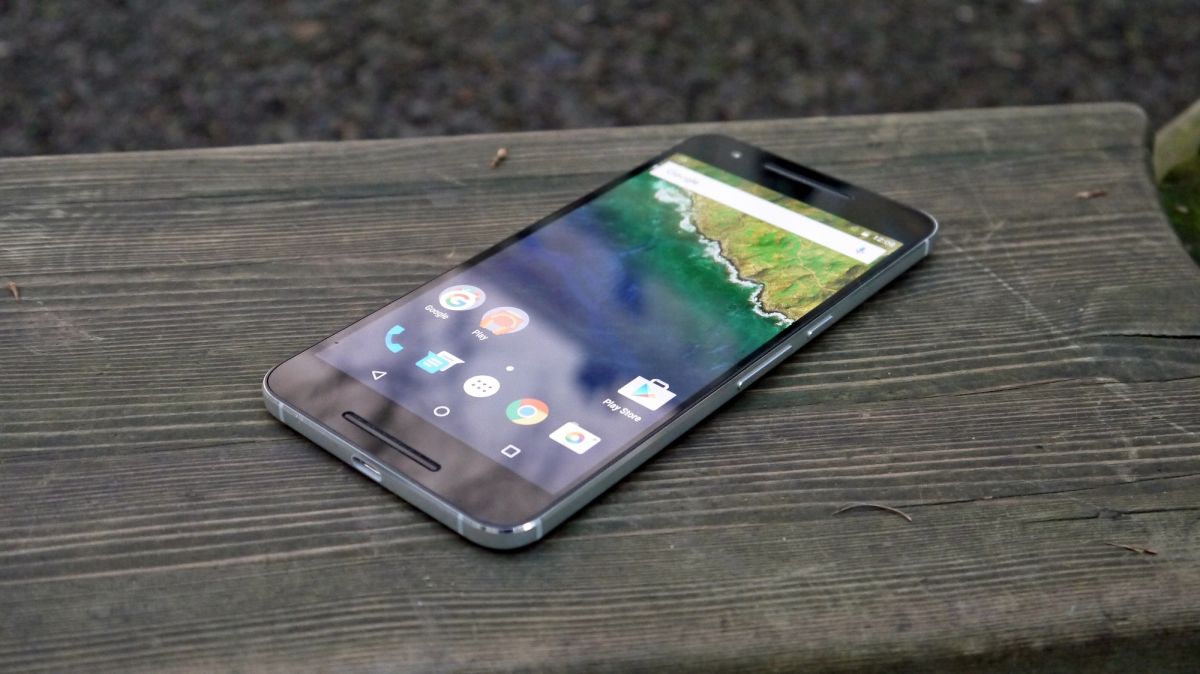
Without diving into the developer settings, the screen is still more saturated than true-to-life. That works for some subjects, like vibrant-looking red strawberries, but looks unnatural on an actor with a slight tan.
The Nexus 6P retains the Adaptive Display functionality from Motorola’s Nexus 6. Whenever the phone is picked up or a notification arrives, it flashes a grayscale notification lockscreen.
I prefer the gesture-sensing Moto Display, which uses tiny IR sensors embedded in the front of the phone to detect motion or a hand wave and then display the time and peekable notifications.
The screen also doesn’t have the common double-tap-to-wake function found on the LG G4 and HTC One M9. That would’ve helped, given the rear-facing fingerprint sensor.
Fingerprint sensor
The Nexus 6P’s aluminum unibody doesn’t attract fingerprints like the smudge-filled Nexus 5 in black with its soft-touch coating. But it does have one spot where fingerprints are wholly acceptable.
Google’s Nexus Imprint Sensor is introduced in the Nexus 6P and Nexus 5X, and it works a lot like other biometric fingerprint sensors out there, including Apple’s Touch ID home button.
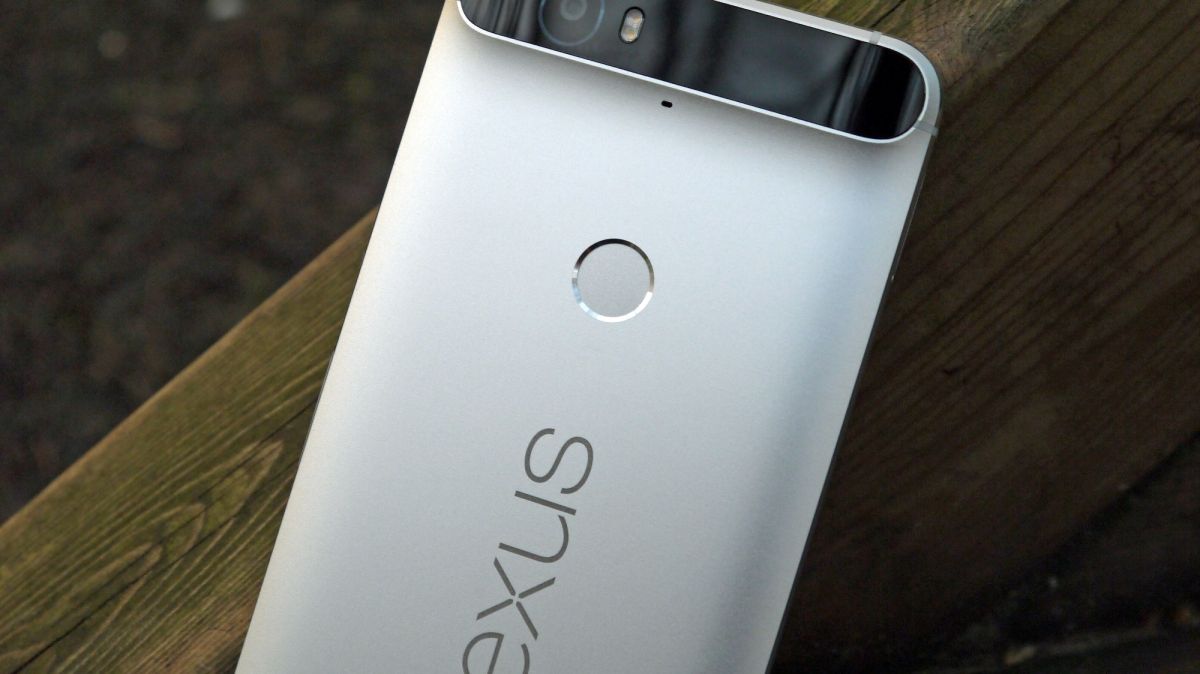
There are two key differences. Registering a new fingerprint takes no longer than eight seconds, whereas Apple and Samsung’s methods require too many long presses and pauses.
More strikingly, the fingerprint sensor is on the back and static – it doesn’t double as a button that you can press down. Google’s hypes this spot as a natural location for your fingers.
My index finger, usually resting along the frame, disagreed at first. I had to learn to bend it around back to unlock the phone, and it was initially awkward, but I eventually got used to it.
It’s a little easier to pull off on the smaller Nexus 5X, but the tradeoff is that I didn’t smudge the Nexus 6P camera, which is off-center and further away than on the 5X.
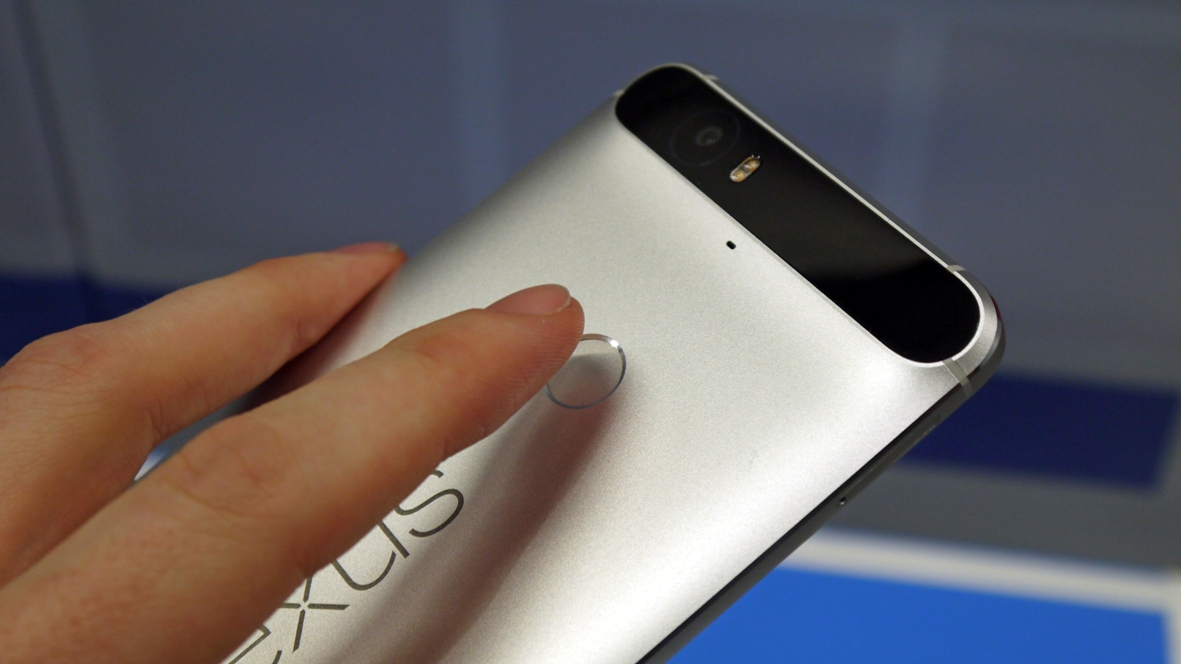
On either phone, it takes half a second to unlock the phone and, even with the fast setup time, the sensor is just as accurate as Apple’s and Samsung’s.
However, I still find myself using archaic unlock methods, simply because it’s easier than picking up this 5.7-inch phone whenever it’s resting on my desk or a table.
This is where front-facing fingerprint sensors work best. However, between you and me, I find that the Nexus 6P is ideal when ‘talking’ to someone, but really nonchalantly unlocking my phone in back. Sneaky, sneaky.
USB-C connection
Google’s Nexus design evolution is reflected in more than just the matte aluminum build. The Nexus 6P makes the jump to charging and transferring data via USB-C.
This means your stash of micro USB cables is useless, and you’ll have to tout around this new connector and charging block. Forget it – or worse, lose it – and your phone’s battery life is in jeopardy.
Changes like this are always a bit jarring, and I feel like I have too many cables already. Every other Android phone and tablet I have uses micro USB, and my Apple devices use Lightning.

My Apple Watch and Android Wear smartwatches take advantage of multiple inductive chargers, and a few holdouts like GoPro still require a USB mini. My bag is full of chargers, and this is just one more.
But, once everyone gets on the same page, the advantage is clear: USB-C offers faster charging times, and the connector is reversible – I never fumble around with inserting it into the Nexus 6P.
Google at least made the transition easier. The Nexus 6P comes with a USB-C-to-USB cable, so you can still charge and transfer files into a computer with normal USB-A port. The Nexus 5X doesn’t offer the same accessory for free.
Specs and performance
The Nexus 6P has been built to be a cutting-edge phone, and it succeeds with more advanced architecture than the Nexus 5X and several top Android phones.
This is because it harnesses the power of the Snapdragon 810 v2.1, which doesn’t run as slow or hot under pressure as the Snapdragon 810 when it debuted in the LG G Flex 2.
Qualcomm’s 64-bit, octa-core processor combines a faster 2.0GHz quad-core chip and a slower, but more energy efficient, 1.55GHz quad-core one. The results finally strike the right balance.
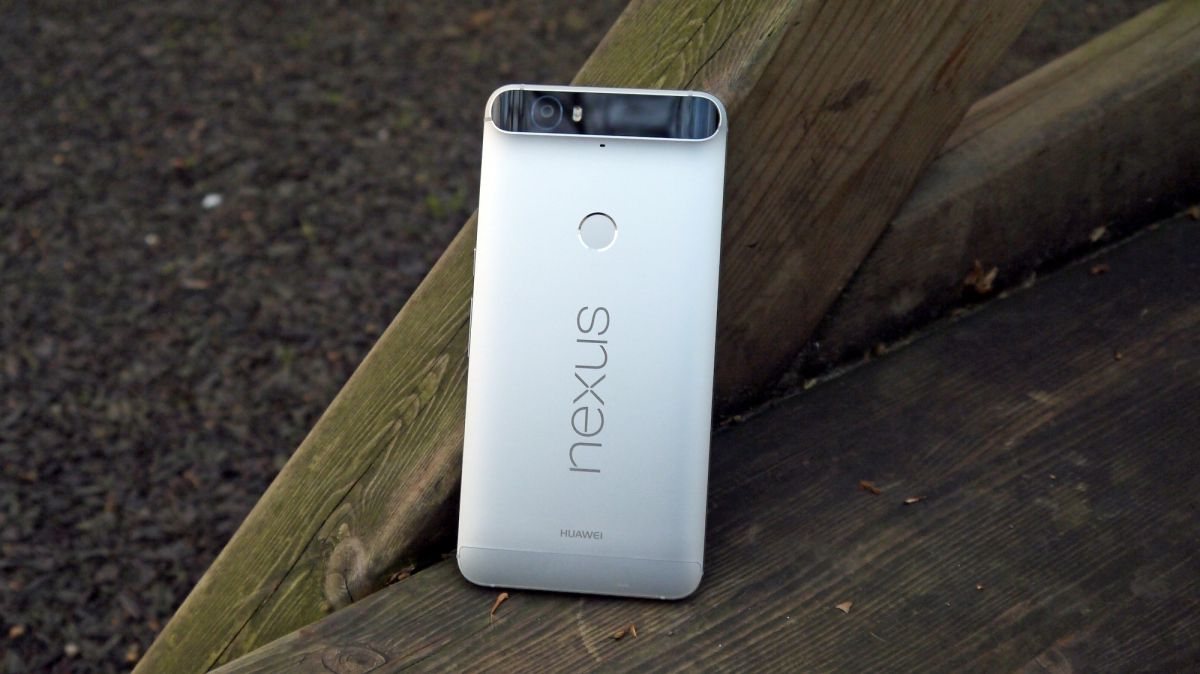
Saving even more power, the Nexus 6P includes what Google calls the Android Sensor Hub, a dedicated motion chip that alone drives all sensors on the phone. This leaves the core processing unit more bandwidth (and thus power) to run the operating system.
The Android Sensor Hub accomplishes orientation and motion tracking tasks, all without taxing the processor. It goes hand-in-hand with the battery-saving, Android Marshmallow Doze feature.
There’s an Adreno 430 GPU embedded into this System on a Chip, or SoC, too and, more importantly, 3GB of RAM. The hardware is fit for multitasking through a whole bunch of apps without much slowdown.
Yes, 4GB of RAM is becoming the standard among phablets, like the Galaxy Note 5, Galaxy S6 Edge+ and OnePlus 2. But, with Android Marshmallow onboard the 6P, it never flinched.
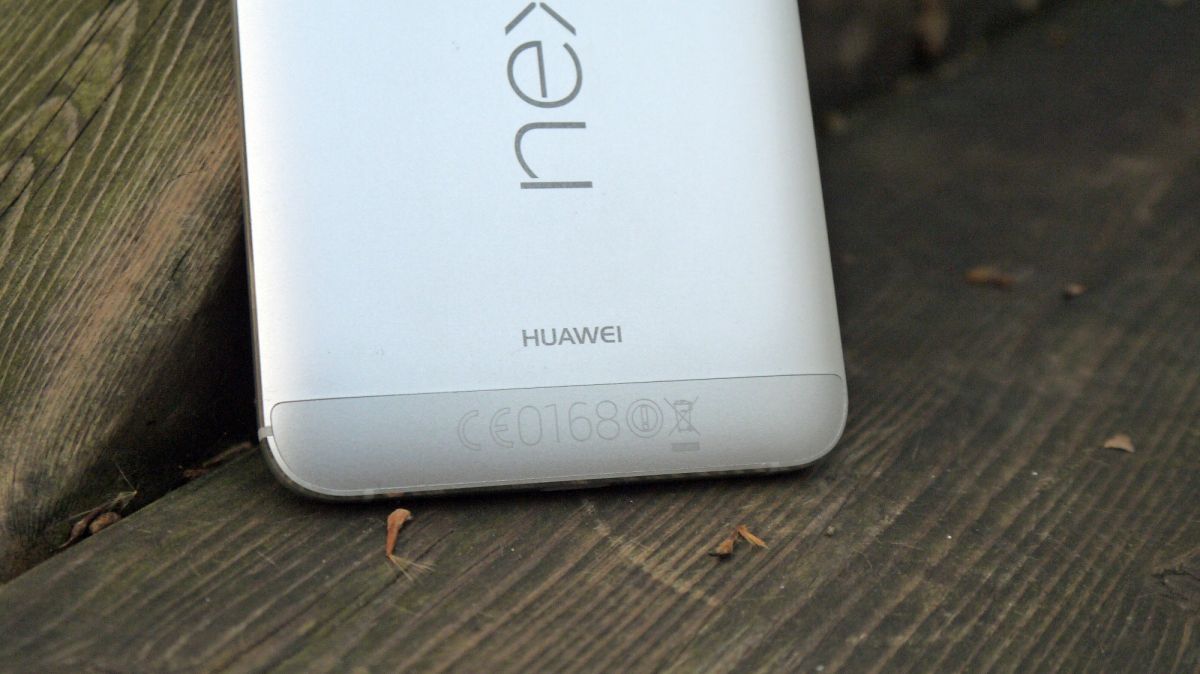
The Nexus 5X is technically slower, with its stepped down Qualcomm 808 processor and just 2GB of RAM. In most – but not all – cases, apps loaded more quickly on the Nexus 6P.
Huawei’s phone also benefits from bigger internal storage sizes of 32GB, 64GB and 128GB, while the 5X is limited to 16GB and 32GB. The latter’s low entry-level price is attractive, but deceiving.
There’s no microSD card slot in the Nexus 6P, so it’s important to pony up enough money for the storage you need both now and down the road.
Performance
So how did all of the Nexus 6P’s silicon fare when put under the pressure? The good news is that the Snapdragon 810 v2.1 didn’t buckle after running a bunch of Geekbench 3 tests.
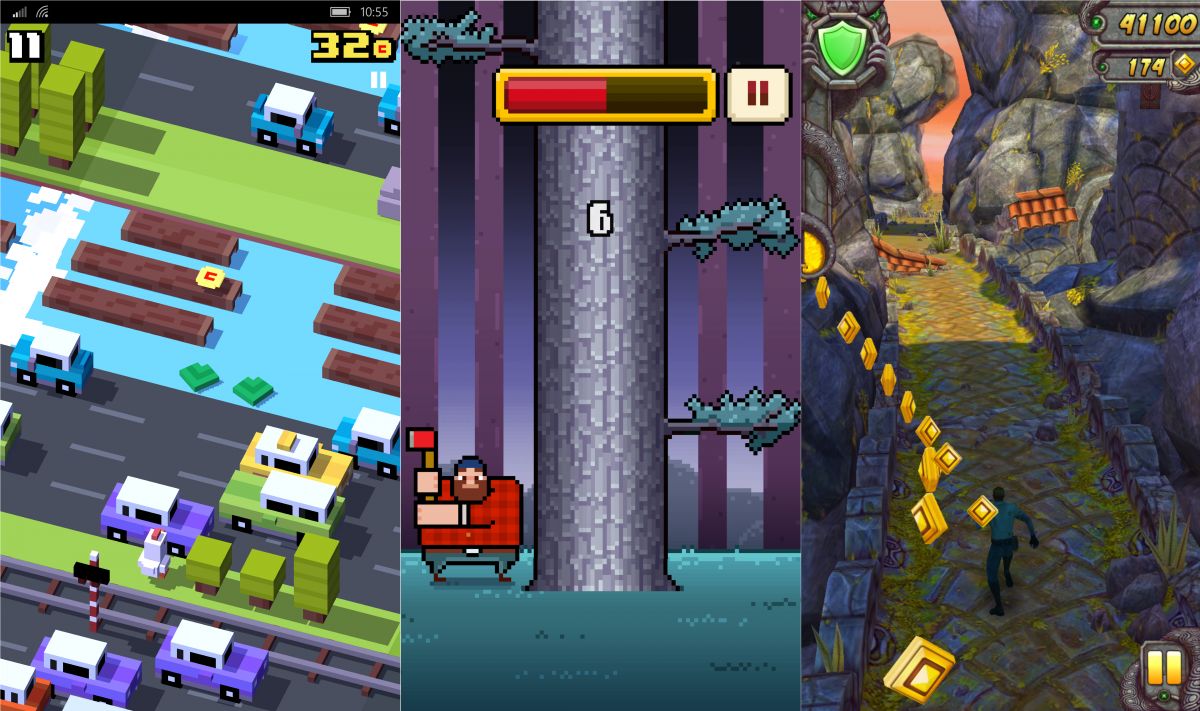
With a score of 4,073, it’s plenty faster than the HTC One M9 (3,595) and LG G4 (3,499), but trails the iPhone 6S Plus (4,418), Samsung Galaxy S6 (4,975) and Note 5 (4,849).
It’s exactly what I hoped for, given the souped-up specs, but bargain price compared to top tier phones from Apple and Samsung. It’s definitely a step up from the Nexus 5X (2,990).
There was an off-chance that the Snapdragon 810 v2.1 processor wouldn’t be the fix Google and Huawei were hoping for. While there’s some slowdown, it’s not the dramatic trouble that made the LG G Flex 2 so disappointing 9 months ago.
Android 6.0 Marshmallow and apps
Google and Huawei’s Nexus 6P’s refinements apply mostly to the hardware, but are also found in its software, with the Android Marshmallow operating system pre-loaded onto the phone. Now at Android 6.0.1 as of January 2016, it’s a smoother experience from boot up to battery drain.
There are actually few obvious changes. It’s mostly behind-the-scenes adjustments, like longer battery life when the phone is on standby and app permission tweaks.
Android 6.0 Marshmallow makes for a smarter version of Google’s mobile operating system, and that’s ingrained in its one noticeable, front-facing feature, Google Now on Tap.
Holding down on the on-screen home buttons brings up Google Now on Tap, which scans what you’re currently reading, watching or hearing, and it tries to educate you on the topic.
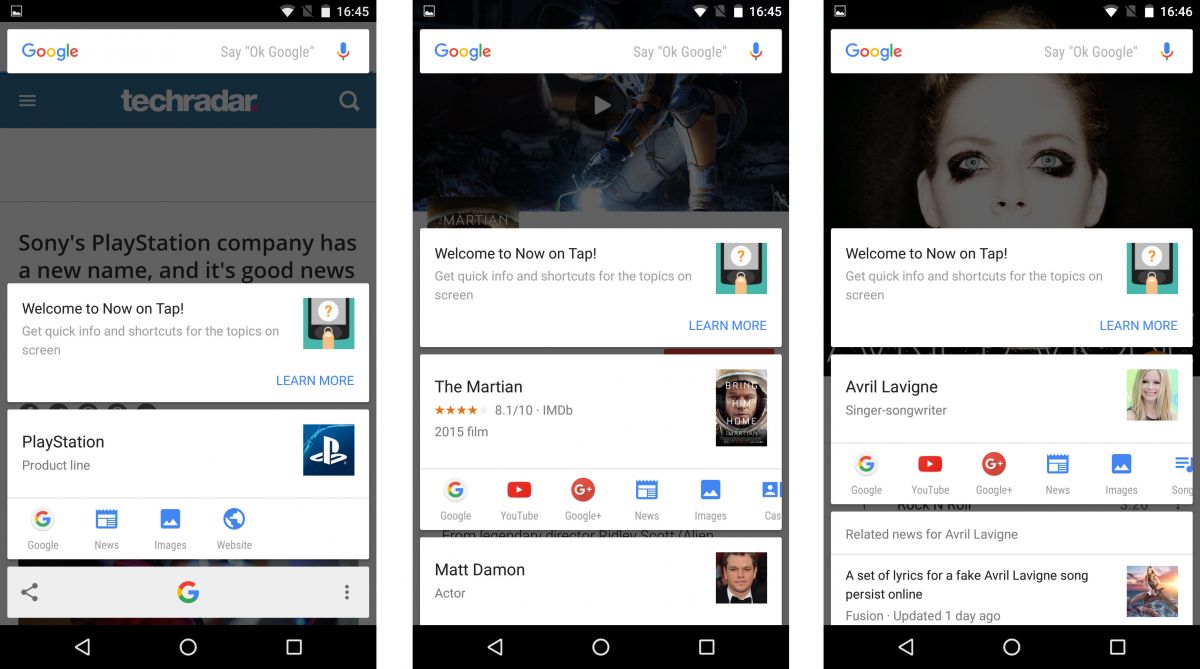
Reading about the new Star Wars movie poster in the news and holding down the home button instantly brought up a short description and series of links for both Star Wars and Lucasfilm.
They’re in the form of icons, but lead to Star Wars-appropriate Google searches, Wikipedia entries, social media content and Google Play Store apps. It’s a neat shortcut for more information on whatever you’re currently looking at.
This works best in messaging apps, wherein someone references a show, actor or newsmaker you know nothing about. Google Now on Tap is a simple way to cross-reference the internet.
Everything else about Android Marshmallow is straightforward in that Nexus 6P is a phone with stock Android. It really contrasts with the two dozen worthless apps, say, Asus phones levy on you.
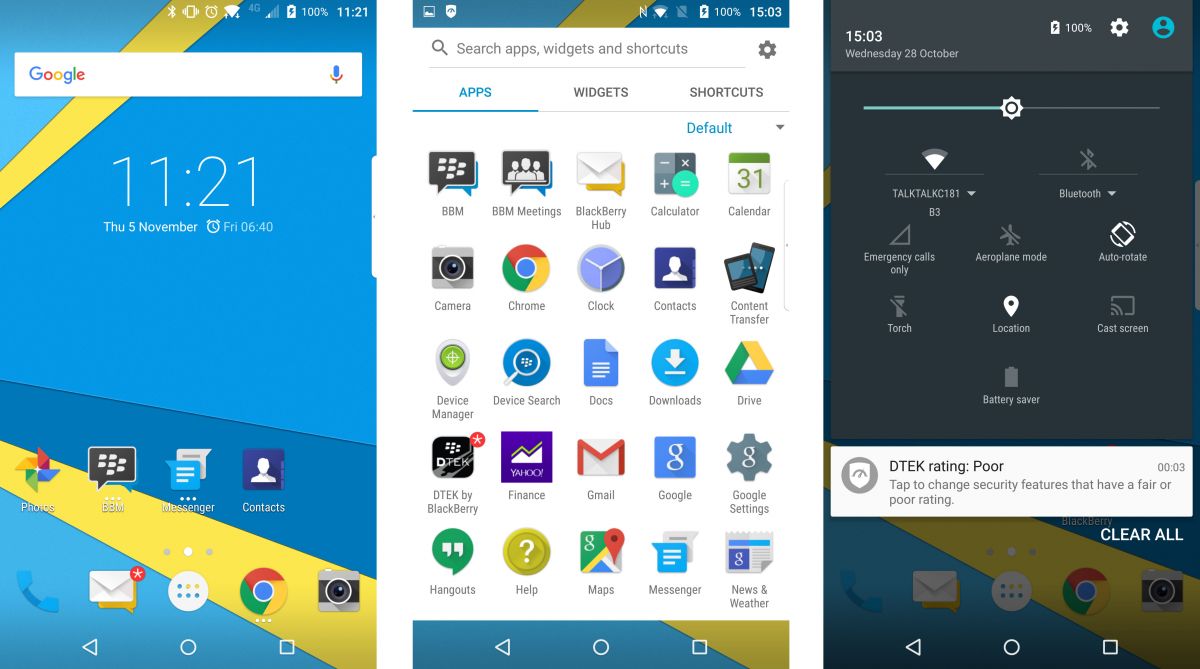
It’s filled with your favorite Google apps out-of-the-box instead: Gmail, Google Maps, Contacts, Drive, Calendar, Photos, Hangouts, YouTube, Photos and so on.
Pinned to the home screen are Google’s camera, SMS Messenger and Play multimedia apps in a folder. Inside is Play Music, Play Movies & TV and Play Games.
The Google Play Store acts as your portal to downloading everything else, from Facebook and Instagram to LastPass and Pandora.
The last thing I’ll touch on before getting into specific apps is the all-encompassing app drawer. Prepare your brain, since it now has you scroll up and down (no longer left to right). There’s a handy recently used apps row at the very top to take away some of the pain.
Messaging
I’ve never been a big fan of messaging on Android, because so many of my contacts use different apps. Nothing ties them together, and the Nexus 6P software doesn’t fix this.
It does, however, offer a clean and simple SMS app called Messenger (different from Facebook’s identically named Messenger app). It’s fast and lightweight.
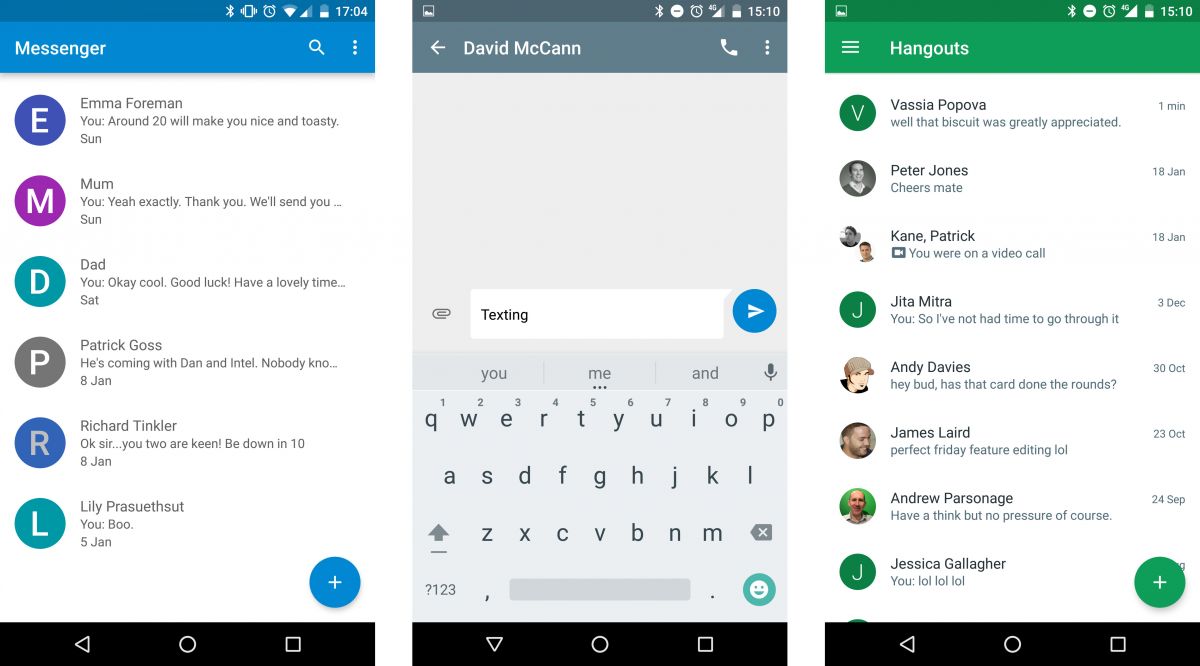
Google, of course, still packs in Hangouts, which was redesigned over the summer for both iOS and then Android. It’s better, but can’t really top Apple’s iMessages way of doing things.
As I explained in my Nexus 5X review, text messages are isolated on my Nexus 6P when using the Messenger app, and Hangouts confuses people by integrating my work email or my Google Voice number.
Group messaging with a number of iPhone users is also a problem (this one problem isn’t necessarily Google’s fault). My messages go to the original messenger and no one else.
It’s a shame, because Google has a fantastic keyboard by default, with finger swiping enabled on the frontend and a smarter autocorrect system in the backend.
Movies and music
The 5.7-inch display of the Nexus 6P is a better fit for watching HD movies in a 16:9 aspect ratio when compared to the old Nexus 5.
The screen size isn’t as big as the 6-inch Nexus 6, but the color is more accurate. I don’t find the hues to be overly saturated, though some people may find this to look washed out.

Really, you can see the difference in side-by-side comparisons of actor’s faces. Orange is the new tan, when I watched “Big” on the Nexus 6P compared to the Nexus 5X.
The latter doesn’t have the artificial pop of the Nexus 6P and doesn’t boast that quad HD display, but it’s colors are more true to life. Nexus 6P, however, beats the 5X when it comes to sound quality.
Listening to music and movies is a bit one-sided on the Nexus 5X. The speaker for all media is located in the bottom of the phone, whereas the multimedia-friendly Nexus 6P has stereo speakers at the top and bottom.
Games
The Nexus 6P can handle all of the game apps I throw at it, with no discernible slowdown or imperfections in the graphics and color. Real Racing 3 and Asphalt 8: Airborne get along just fine.

Slight variations between Nexus displays favor the Nexus 5X when it came to movies starring real people, but game apps I test look, oddly, a tad more muted in color on the 6P display.
Bezel has become a bad word among smartphones, but I find games in landscape mode easier to control, thanks to the slightly thicker bezel of the Nexus 6P (the same is true of the Nexus 5X).
Camera
The Nexus 6P camera, along with the Nexus 5X, is the best of any Nexus phone, Google said to no one’s surprise. After all, we only saw subpar results from the Nexus 5 and Nexus 6.
What’s different here is that the 12.3MP Nexus 6P rear camera captures 1.55-micron pixels, which is larger than the normal 1.4 microns. Translation? Bigger pixels and more light captured.
This allows me to take superior indoor photos, especially in low-light situations like restaurants, bars and outdoors after dark. I’m pleased with the results compared to older Nexus phones.
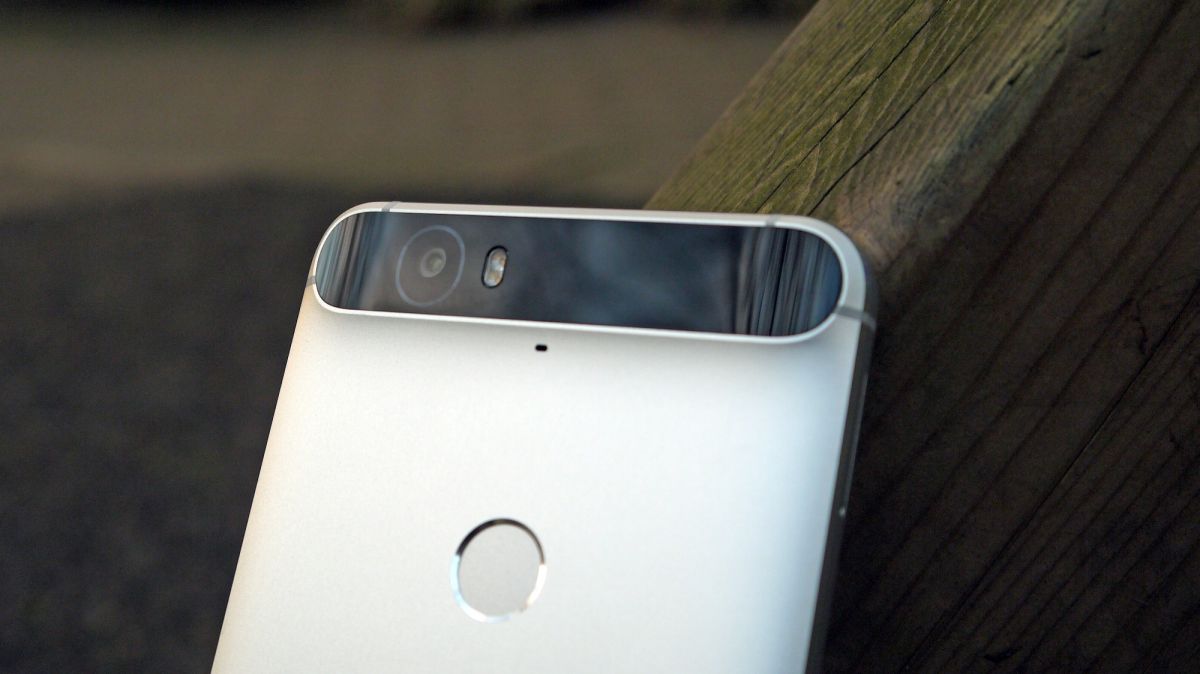
This isn’t to say that the Nexus 6P camera is always better or brighter than the Samsung Galaxy Note 5, LG G4, iPhone 6S Plus and Moto X Style I awkwardly carry around.
It’s also identical to the 12.3MP Nexus 5X camera sensor, save for processing speeds. I had to double check the files when comparing my photos to make sure I didn’t load the same ones.
Both new Nexus phones lack optical image stabilization (OIS) and the nifty camera software that is offered by Samsung and LG.

You won’t find options to shoot in RAW, gesture controls to snap selfies without touching the display or software-manipulated wide selfies for group shots.
Google, to its credit, has improved its default camera software in a year’s time. You can switch between the front- and rear-facing camera with just one tap instead of two confusing taps.
You can also set the timer with one press, too, and turn on video recording with an easy swipe. This Nexus 6P camera records video in 4K at 30 frames per second, while the front-facing camera is 8MP with the normal 1.4 microns and the same f/2.0 aperture.
In fact, the only thing hidden in a side menu are returning modes: Lens Blur, Panoramic and Photosphere.
This is where Google’s camera failed to impress me more than Samsung’s Galaxy Note 5, as much as I saw impressive results from both. The extra modes and post-production processing found in recent Samsung phones is still top-notch, even with the normal 1.4 microns.
Battery life
The Nexus 6P is a big phone with a big battery. At 3,450mAh, it’s capacity is bigger than most other phones we’ve reviewed, save for a few, like the Samsung Galaxy S6 Active and Moto X Play.
Google’s phablet lasts slightly longer than one day with heavy use, so you’ll have time to get back to that all-important USB-C charger before it’s completely drained. It lasts just long enough.
Our battery life tests indicate that how quickly the battery drains heavily depends on the display settings you have the phone set to: for example, is adaptive brightness on or off?
Turning it on saves battery life, with our 90-minute HD video running the 100% charge down to 84%. That’s just shy of the Samsung Galaxy Note 5 that ran down to 86% at full brightness.

However, this isn’t the true full brightness of the Nexus 6P. Diving into the settings menu and switching adaptive brightness off drains the full battery life down to a less impressive 75%.
What helps, if you’re not constantly turning on the display, are Google’s new software tricks: Doze mode and App Standby. They essentially put the phone into a semi-sleep mode.
When you go to pick up your phone after waking up, and it wasn’t on the charger, you should see minimal battery drain and breathe a sigh of relief. It’s a handy tool, and beats the pants off of straight battery life tests.
Even better, when you do charge the Nexus 6P, it takes just 1 hour and 37 minutes to juice the battery up to 100%. That’s faster than the Nexus 5X and it’s smaller and weaker battery.
It’s marginally slower to charge than Samsung’s Fast Charging and Qualcomm’s Quick Charge 2.0 standards, which use a micro USB cable along with a larger-than-normal charging brick.
Samsung’s Galaxy S6 and Note 5, for example, fill back up in 1 hour and 20 minutes. Thus, USB-C is nearly as fast with the added benefit of being reversible.
What’s missing here are any sort of wireless charging capabilities. Samsung’s phones are leading the way via their 88-minute “Fast Charge Wireless Charging Pad.”
Google, on the other hand, didn’t include any sort of wireless charging in its two Nexus phones. It recently yanked the Nexus Wireless Charger in its Google Store because of this reason.
Competition
Samsung Galaxy S6 Edge+
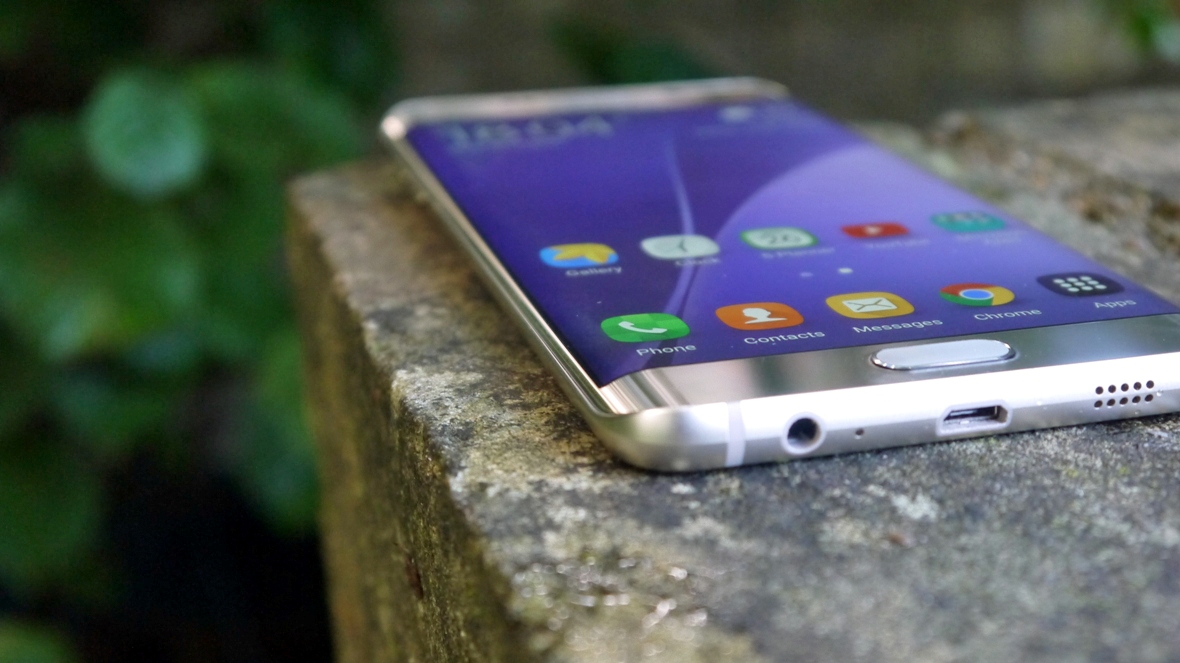
Samsung is an old hand at phablets, so it’s no surprise that the Samsung Galaxy S6 Edge+ presents the Nexus 6P with some stiff competition.
The name might be a bit of a mouthful and with a 5.7-inch screen the phone is too, but what a screen it is. Like the Nexus 6P it’s QHD, but unlike the 6P it’s also curved, leaving it looking absolutely gorgeous.
Sadly, those curves are little more than eye candy and the S6 Edge+ is pricier than the Nexus 6P, but with a stylish metal and glass build, a class-leading 16MP snapper, a powerful octa-core processor, 4G of RAM and a fingerprint scanner it goes a long way towards justifying its price tag.
It’s more powerful and more stylish than the Nexus 6P and it also has better photographic chops, but with underwhelming battery life, a high price and a more cluttered take on Android than the 6P’s stock offering it won’t be a better buy for everyone.
iPhone 6S Plus
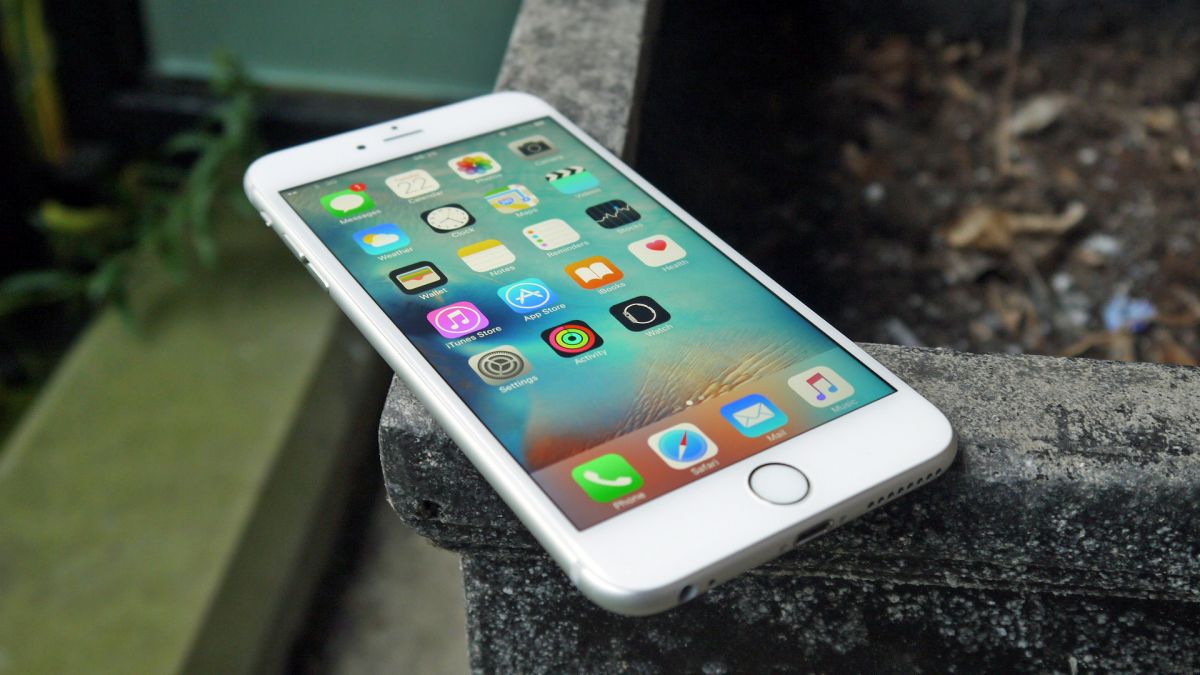
The iPhone 6S Plus is Apple’s second stab at a phablet and it’s quite an achievement. It’s actually barely a phablet by Android standards, and certainly smaller than the Nexus 6P at 5.5 inches. At 1080 x 1920 it’s also not as sharp, but it’s bright, clear and vibrant, so you probably won’t miss the extra pixels too much.
It also sports 3D Touch, which hasn’t reached its full potential yet, but is still an exciting new way to interact with the phone.
With a decent camera, a premium design and slick performance too the iPhone 6S Plus doesn’t feel particularly lacking in any area. But it’s a lot more expensive than the Nexus 6P and if you want a true phablet it’s a little on the small side.
Moto X Style
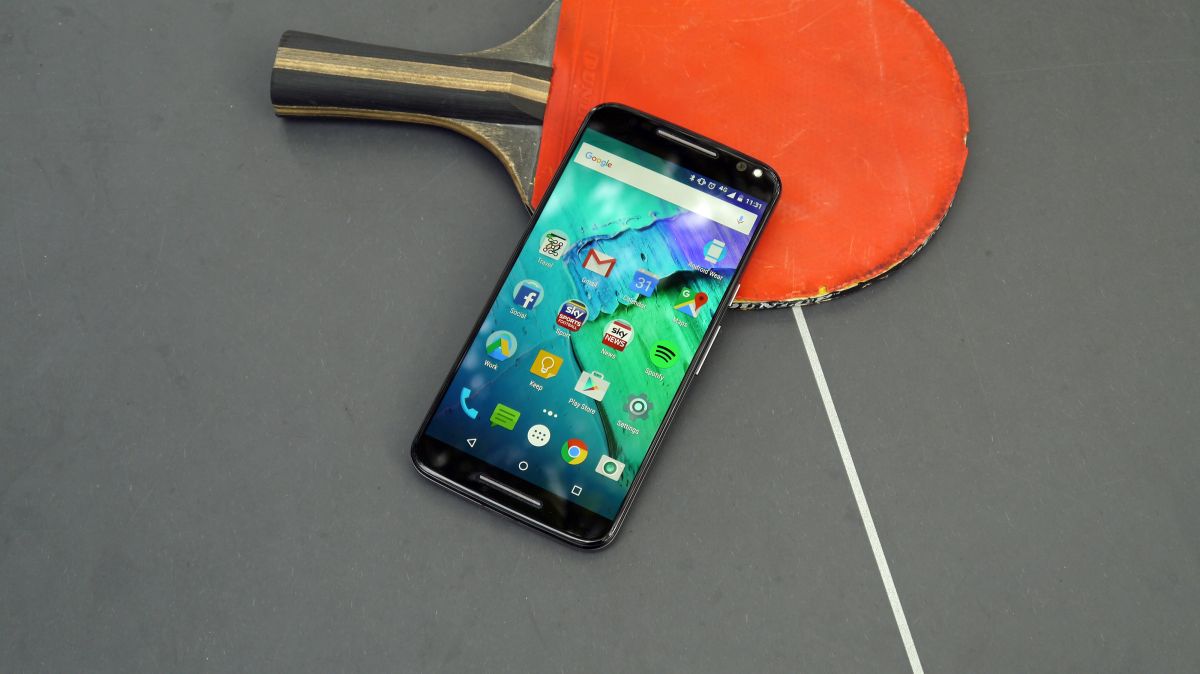
The Moto X Style is another 5.7-incher with a QHD screen and like the Nexus 6P it’s fairly affordable for a flagship.
It’s got a lot going for it too, with strong performance, a bright and vibrant screen, a good camera, powerful speakers and Moto Maker customisations, allowing you to create a good looking handset that fits your own style.
Like many recent smartphones the battery life is a bit on the low side and at 11.1mm thick it’s a little chunky. But otherwise it’s a strong and stylish alternative to the Nexus 6P and with near stock Android on board the interface is pretty similar to Google and Huawei’s latest offering too.
Samsung Galaxy Note 5
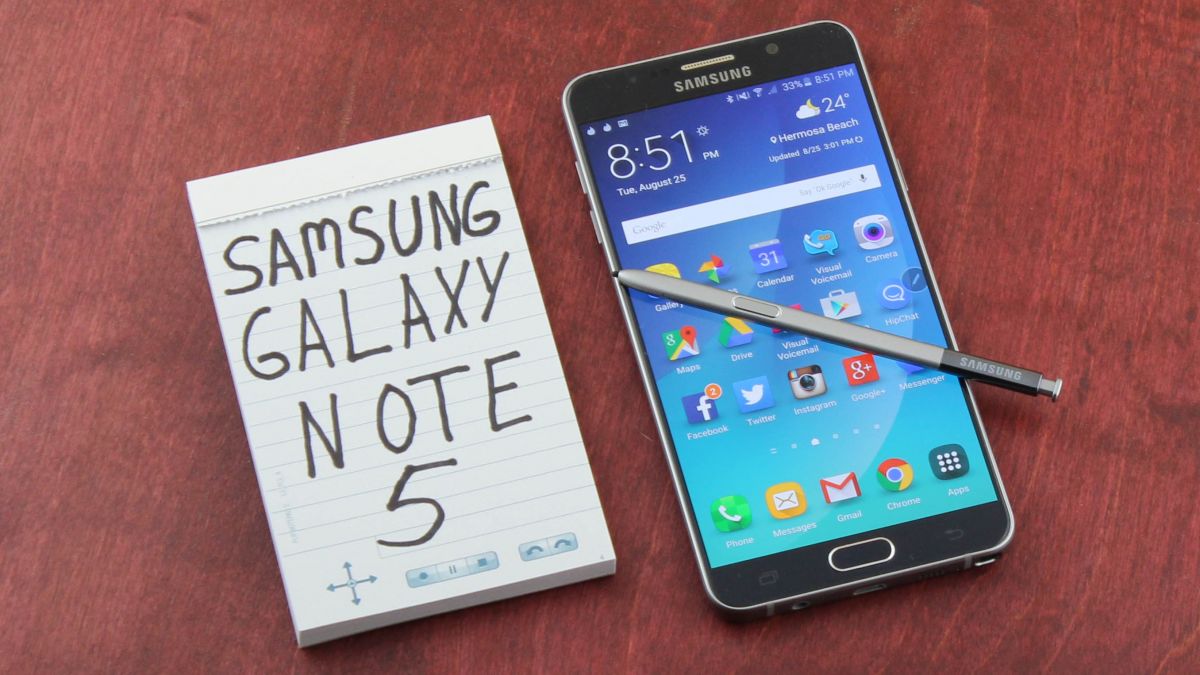
Samsung’s other phablet of 2015 is a slightly different proposition to the Nexus 6P, as not only is it a lot more expensive, but with an included S Pen Stylus it asks to be used in a different way.
Jotting notes, sketching and even working feel a little more viable on it, making it less of an oversized phone and more of a genuine productivity tool.
Stylus aside the Samsung Galaxy Note 5 is a good looking handset, with a metal and glass build, and with an octa-core processor and 4GB of RAM it’s one of the most powerful phones around too.
It’s also capable of taking a great photo and its 5.7-inch 1440 x 2560 screen is as good as we’ve come to expect from Samsung.
Other than the high price and the fact that you flat out can’t buy it in a lot of places the Galaxy Note 5 is better in most ways than the Nexus 6P, but it’s not as good value.
Nexus 5X
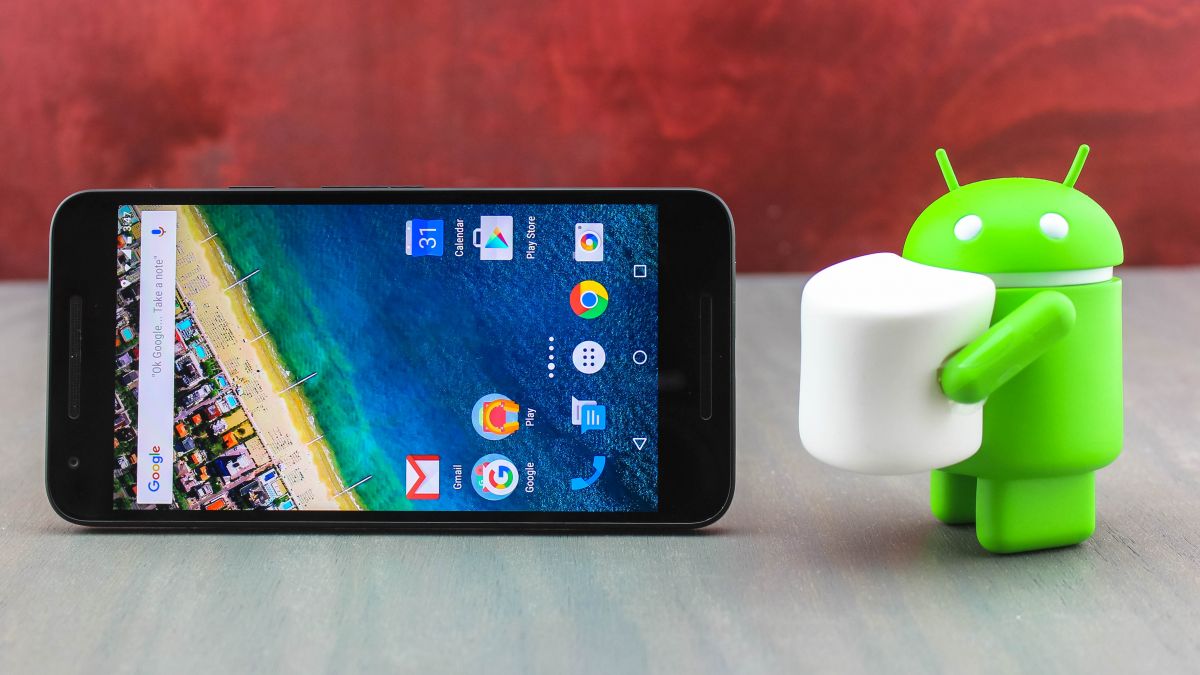
The Nexus 6P isn’t the only 2015 Nexus handset, as we also got the Nexus 5X. This is aimed at a very different audience though. For a start with its 5.2-inch 1080 x 1920 screen it’s not a phablet.
It’s also lower end than the Nexus 6P, with a hexa-core Snapdragon 808 processor, 2GB of RAM, a plastic build and just a 5MP front-facing camera, where the Nexus 6P has an 8MP one.
The rear camera is the same spec though, it has the same fingerprint scanner, the same stock build of Android Marshmallow and a lower price tag.
If you’re after stock Android but don’t want a phablet or can’t stretch to the Nexus 6P then the Nexus 5X is a great option, but it’s no flagship.
Verdict
The Nexus 6P is one of the best Android phones you can buy right now, given its top-of-the-line specs for a more affordable price. It’s easier to hold and takes better photos.
That wasn’t a big surprise to me in this review. This phone was always going to be better than the Nexus 6, as much fun as I had with the ridiculously big screen. Where the 6P fits into the current crop of Android phones remains the biggest question over my week of testing it out.

We liked
I can hold the Nexus 6P in one hand without dropping it, although it takes two hands to operate. That’s a relief for anyone who couldn’t adjust to the Nexus 6. The back of the phone has a fast and accurate fingerprint sensor and the front fits in loud-sounding stereo speakers.
It has Android Marshmallow 6.0, which is worthwhile simply for its battery-saving tricks. The best part is that you get all of these features and a fast processor for a lower-than-average price. For these reasons, this is the best Nexus phone and one of the best Android phones right now.
We disliked
That said, this phone is not for everyone. There are more full-featured phones out there from familiar names, like Samsung and LG. The Nexus 6P’s hardware isn’t as fast as those rivals’ flagship phones, and it’s missing a few of their best camera software tricks.
There’s no wireless charging or optical image stabilization integrated into this phone. These are two things that are becoming standard among the best smartphones. Really, though the biggest problem for this new Nexus phablet is that there’s so much competition.
Verdict
The Nexus 6P is a luxury phone without the premium price to match. Behind its aluminum finish are powerful phone specs that nearly keep up with Apple and Samsung’s flagship phablets. That’s because the Snapdragon 810 v2.1 processor gives Qualcomm’s troubled chip new life, plus 3GB of RAM is just enough to future-proof the phone.
As for USB-C… it may be ahead of its time. Consider yourself an early adopter when it comes to this and Android Marshmallow. The Nexus Imprint fingerprint sensor is right on time, even if it landed on the back of the phone, and Google finally catches up to Apple’s Touch ID. This method offers just as much speed and accuracy.
Google’s super-sized phone is thinner, lighter, stronger and easier to hold, making it a true step up from the Nexus 6 in every way imaginable. No, it’s not fast as the Samsung Galaxy Note 5 and Galaxy S6 Edge+ – and the 12.3MP camera is comparable, not always better. But this is the best phablet for the price, hands down, and returns the Nexus brand to its more affordable and palmable roots.










































i quoted him talking about the reversible USB connector, he's saying "less of a chance" implying there is still "some chance" to insert it incorrectly.
which is wrong, it's physically impossible to insert it incorrectly.
Perhaps you shouldn't given you said snapdragon 801 and not 810 and also said that it isn't as fast as other rivals like who lol? Samsung and their slow touchwiz compared to stock clean android? Right because clean software means the phone is slower.. 810 is by definition one of the most powerful chipsets you can find so calling it slower than rivals is beyond me tbh. Good points just haven't got some facts right.
This is a really late reply, but the PPI decrease is because the screen size is larger, and therefore less condensed. PPI doesn't necessarily mean a whole lot, it's just how many pixels they fit in that space. Any two 2560×1440 displays of the same size would have the same PPI as far as I understand it.
Why is no one addressing the elephant in the room? Huawei as a company is built on intellectual property theft, deceit, espionage and has a direct link to the PLA and their continued effort to steal any and all intel. It's like everyone has forgotten how they got started, even freakin' google who got hacked in 2009 to steal their source code (Baidu anyone?). It is not simple paranoia when you actually know the background of such a company. http://www.networkworld.com/ar…
Yawn! Techradar seem to be another website on the Samsung/Apple gravy train, have they even thought that people don't want a overlay and love pure android, the whole review sounds like he didnt want to like it , a almost begrudging approval total bias
Can I open and replace batteries
USB-C charging is the future. Unfortunately, right now USB-C cables and devices are still not common, and the only choice is to carry around long and messy wires. The MAXiOS 3X3 Keychain Charger offers the only all-in-one compact solution right now.
"since it requires two hands to operate the phone properly" FOR YOU.
been a big fan of techradar for a number of years and it is normally my go-to tech review site. however, something didn't quite add up while reading the review of the nexus 6p. killer review in all the sections and yet somehow it's ridiculously low down on your 'top 10 phones' list. every tech website/blogger (android authority, mkbhd, etc.) has said that this is possibly the best android phone around and yet this isn't reflected on your list at all.
and then i came across this review on t3:
http://www.t3.com/reviews/nexu…
how can the same phone reviewed by the same person have different ratings?! does make me (and possibly others if they have noticed this) reconsider the validity of your reviews if even the reviewer himself can't be consistent
I have the Nexus 6P and the iPhone 6s Plus (don't ask:-) They are both excellent phones, and at this point–which is only a few weeks into using them–I cannot pick a favorite. The fanboys for both phones have their favorite loves and hates, but the quality of both is excellent. I would NOT agree that the 6P is a tiny step behind top premium, and I WOULD argue that Android 6 Marshmallow is an outstanding OS. The "bulge issue" on the 6P is a non-issue if you've ever seen one or held it in your hand (it's minutely noticeable), but the button and wide bezels on the iPhone 6s Plus definitely are issues and they should both have disappeared…like, 2 years ago.
Snapdragon 810, not 801 (in Verdict). You guys need to improve your editing.
Horrible phone. They excluded HDMI-out. So much for traveling or watching a movie at your friend's house. So mich for the greatnessnofnUSB-C. I migrated from LG G2. I would have been less disappointed/shocked if they had left off the headphone jack. It was a peckerhead move.
The camera need space for the various lenses and filters. That's why the lens is always the thickest part of any device.
Cons mentioned: just shy on specs compared to the competitors. Well, it's also priced about $200+ less than theirs. For the price you get lots of the current technologies and it's a Nexus without the bloat.This is also a Samsung Amoled panel. The touch sensitivity on this device is awesome. Battery life and quick charging via USB C seems awesome so far.
649 euro for those specs and this brand??????really bad joke
There's still anything + or – 180 degrees. It's not as failsafe as a stereo adapter which I've always thought was a superior form factor–why not just layout the connectors along a small rod? If we're afraid of confusion make it hexagonal. It's so weird that we don't.
I've been using it for a few days now, and I can honestly say that it is much, much faster than anything LG or Samsung has done. Just came from the G4
Its called payola: Bribing of the media to misrepresent and thereby override reality. It's as commonplace in the media as ad revenue.
You drop a phone on ceramic tile from any height and it's a roll of the dice what the damage will be. If you want a tough phone buy one (s6 active or that new Moto with the unbreakable screen). Or use a case. It's a big slab of glass on the front. You drop glass and sometimes it will break.
This phone is as fragile as a glass doll, the screen cracked when I dropped my two-day old phone on ceramic tile from a height of 15 cm, yes, 15 cm, as in 0.15 meter.
Maybe it's a super unlucky drop or perhaps this particular phone is defective to begin with, but all of my other phones have survived much, much, much worse drops than this and they all survived. I cannot properly express my disappointment with this phone.
This review sounds like a Samsung advert, I thought TechRadar were better than that.
Stop complaining about usb type c, things change and get better… its the future get over it.
Cool! For the money it should be great! Enjoy!
If you mean that it's impossible to have the plug FIT incorrectly, you could say that about the currently USB standard. But as far as a plug that can only fit while oriented upside down or right side up, there is an infinite number of angles you can be off by. That's why I pointed out how a stereo jack is far more forgiving. You can insert a stereo jack into its port at any rotation.
I finally received an invite for the OnePlus 2 so have ordered one of those – if nothing else it's a much cheaper upgrade compared to all of the others, especially as I buy my phones outright rather than have a contract.
It only took 4 months or so (plus several referrals to bump me up the queue) to get my invite. I had given up on it!
They are not mutually exclusive…